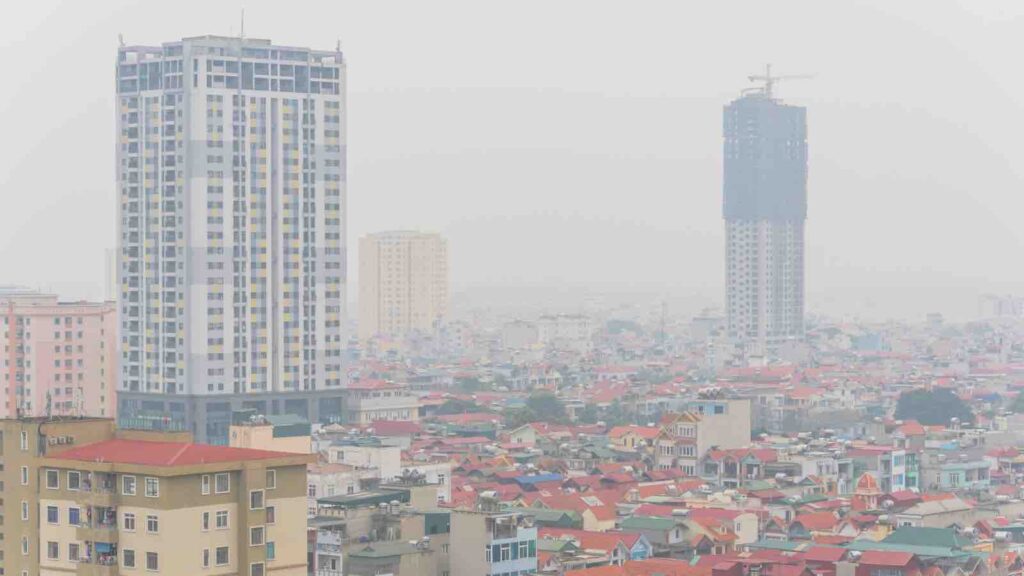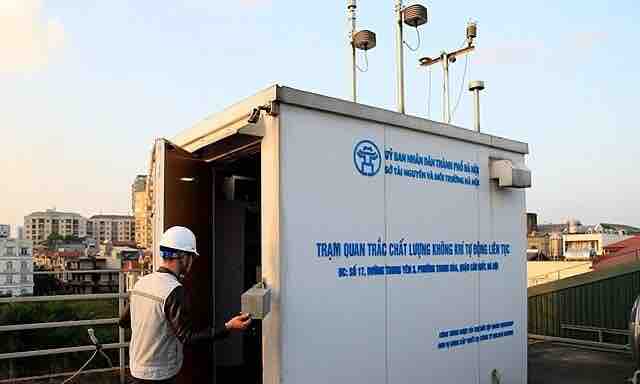Air quality in Hanoi has been dropping as the levels of fine dust particles in the air were twice as much as the normal standard on several days.
Hanoi’s air quality has seen a significant decline, with fine dust particle levels reaching twice the acceptable standard on multiple occasions. In response, the Hanoi People’s Committee is actively soliciting feedback on air quality management strategies through 2030, with a vision extending to 2035, aiming to address the capital’s broad-scale air pollution challenges.
RELEVANT SUSTAINABLE GOALS



National environmental reports indicate that from 2018 to 2020, Hanoi’s average PM2.5 levels were double the national standard of 25 μg/m3. Additionally, in 2019, low air quality days accounted for 30.5% of the year, underscoring the severity of the situation. Recent months have witnessed frequent hazy conditions during mornings and evenings, pushing air quality into unhealthy and hazardous levels.
Swiss air quality technology firm IQAir reported that Hanoi experienced “very unhealthy” pollution levels on recent mornings, with PM2.5 concentrations ranging from 150.5 to 250.4 μg/m3. Although air quality improved by afternoon, it remained at levels potentially harmful to public health.
The city’s annual PM2.5 averages vary significantly across districts, with higher levels in urban centers and generally lower levels in suburban areas, except in Gia Lam, Dong Anh, and Thanh Tri districts. PM2.5 levels spike during winter due to weather patterns that impede pollutant dispersion, while summer sees improved air quality thanks to rain and sea breezes aiding in pollutant dispersal.
Identifying the precise sources of air pollution remains a challenge for Hanoi. However, studies by the Ministry of Natural Resources and Environment and the World Bank point to road traffic and dust as primary contributors to PM2.5 and PM10 pollution, with traffic-related emissions accounting for the majority of these pollutants. Industrial activities and straw burning are also significant sources.
Vietnam Expands Its Air Quality Monitoring Network with 113 New Stations
A 2020 study by the National Economics University in Hanoi further highlights the staggering cost of air pollution to Vietnam, amounting to $10.82-13.63 billion annually.
Vietnam is set to significantly enhance its environmental oversight capabilities with the addition of 113 air quality monitoring stations across the nation, as part of a comprehensive environmental monitoring strategy unveiled by the government.
By 2030, the country plans to deploy 98 automatic stations, followed by an additional 15 stations thereafter. This expansion means that by 2025, Vietnam will conduct between eight to twelve times more annual air quality assessments than it currently undertakes. These assessments will provide crucial data on pollutants such as sulfur dioxide, nitrogen dioxide, carbon monoxide, and total suspended particles (TSP).
When the rollout is complete, Vietnam’s air quality monitoring network will boast 216 stations, supplementing the existing 103 stations. Of the 98 automatic stations to be installed in the initial phase, 62 will be strategically placed in areas of significant human activity to facilitate health warnings and other crucial notifications.
Additionally, six stations will be positioned in regions with minimal human presence, aimed at assessing air quality across vast areas and representing the six socio-economic zones of the country. Notably, in the mountainous regions of northern Vietnam, a station will be established in Lai Chau Province’s Muong Te District; in the Red River Delta, another will be located at Hai Phong City’s Viet Hai Commune; and in south-central Vietnam, one will be placed on Quang Nam’s Cu Lao Cham Island, highlighting the government’s commitment to a comprehensive environmental surveillance strategy.
Lead image courtesy of TrongNguyen from Getty Images (Top view foggy and misty Hanoi urban landscape causes by air pollution)
You may also be interested in :
Rights to Clean Air: 5 Strategic Actions For Cities To Ensure Everyone Breathe Clean Air




